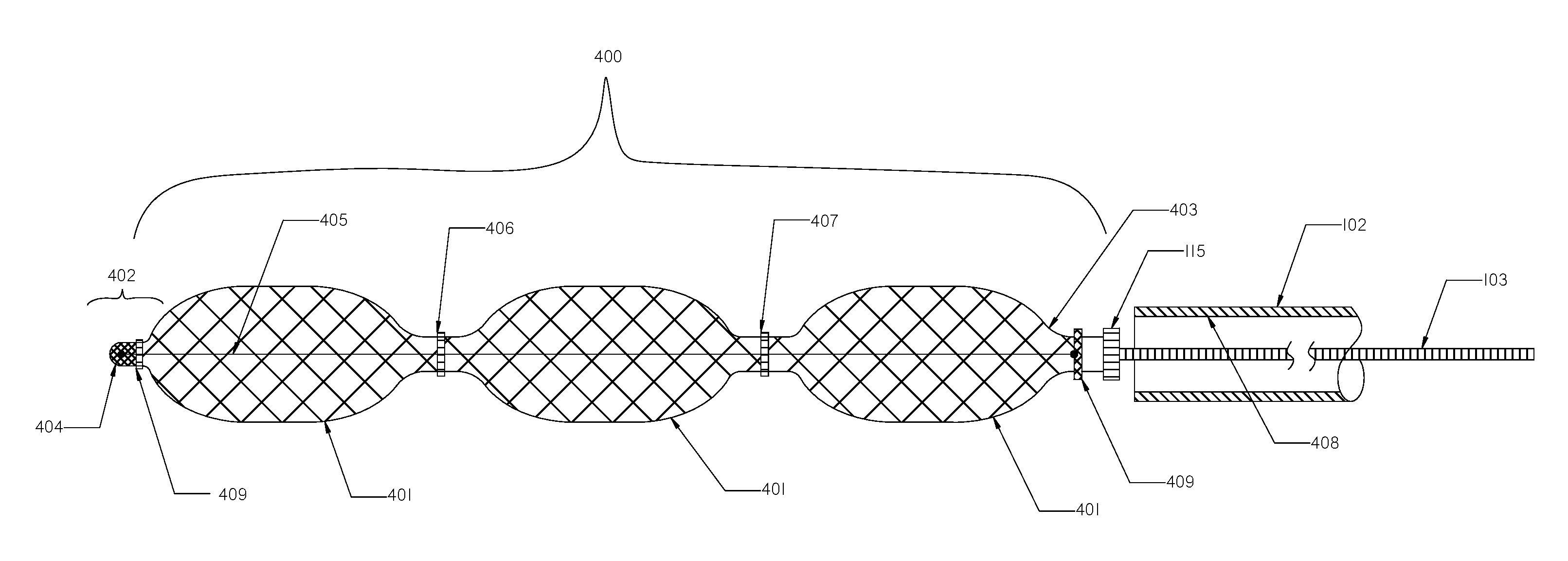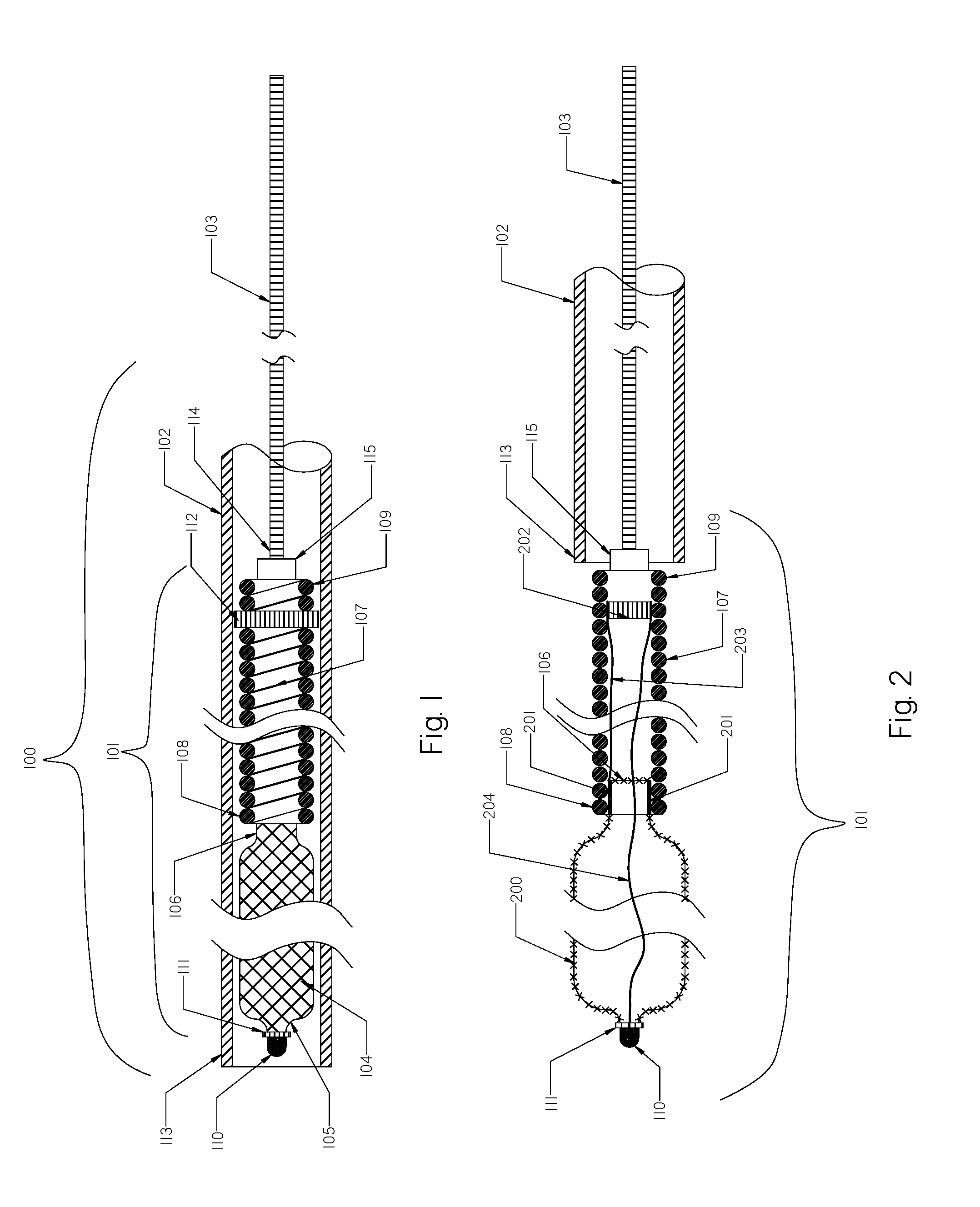Devices and Methods for Treatment of Endovascular and Non-Endovascular Defects in Humans Using Occlusion Implants
a technology of occlusion implants and human body, which is applied in the field of devices and methods for treating endovascular and non-endovascular defects in humans using occlusion implants, can solve the problems of affecting the thrombosis of the coil, the inability to deploy the plug, and the size of the plug, so as to facilitate deployment and retrieval, enhance the thrombogenicity of the implant, and enhance the radiopacity of the occlusion implant
- Summary
- Abstract
- Description
- Claims
- Application Information
AI Technical Summary
Benefits of technology
Problems solved by technology
Method used
Image
Examples
Embodiment Construction
[0101]FIG. 1—Illustrates a schematic view of an occlusion device or system 100 with occlusion implant 101 inside the delivery catheter 102. The occlusion implant 101 is shown inside the delivery catheter 102 in a collapsed configuration. The occlusion device 100 comprises the occlusion implant 101, the delivery catheter 102, and the pusher member 103. The occlusion implant 101 comprises two elongate regions including the first distal region made of an expandable tubular braid 104 having a distal end 105 and the proximal end 106, and the second elongate region proximal to the first distal region comprised of a non-expandable helical coil 107 having the distal end 108 and proximal end 109. The tip 110 is formed on the distal end 105 of tubular braid 104 and prevents the very distal section of the braid 104 to fully expand when deployed from the delivery catheter 102. 100. The tip 110 may be made of one of the following materials: metal, polymer, rubber, adhesive or combination of all....
PUM
 Login to View More
Login to View More Abstract
Description
Claims
Application Information
 Login to View More
Login to View More - R&D
- Intellectual Property
- Life Sciences
- Materials
- Tech Scout
- Unparalleled Data Quality
- Higher Quality Content
- 60% Fewer Hallucinations
Browse by: Latest US Patents, China's latest patents, Technical Efficacy Thesaurus, Application Domain, Technology Topic, Popular Technical Reports.
© 2025 PatSnap. All rights reserved.Legal|Privacy policy|Modern Slavery Act Transparency Statement|Sitemap|About US| Contact US: help@patsnap.com



